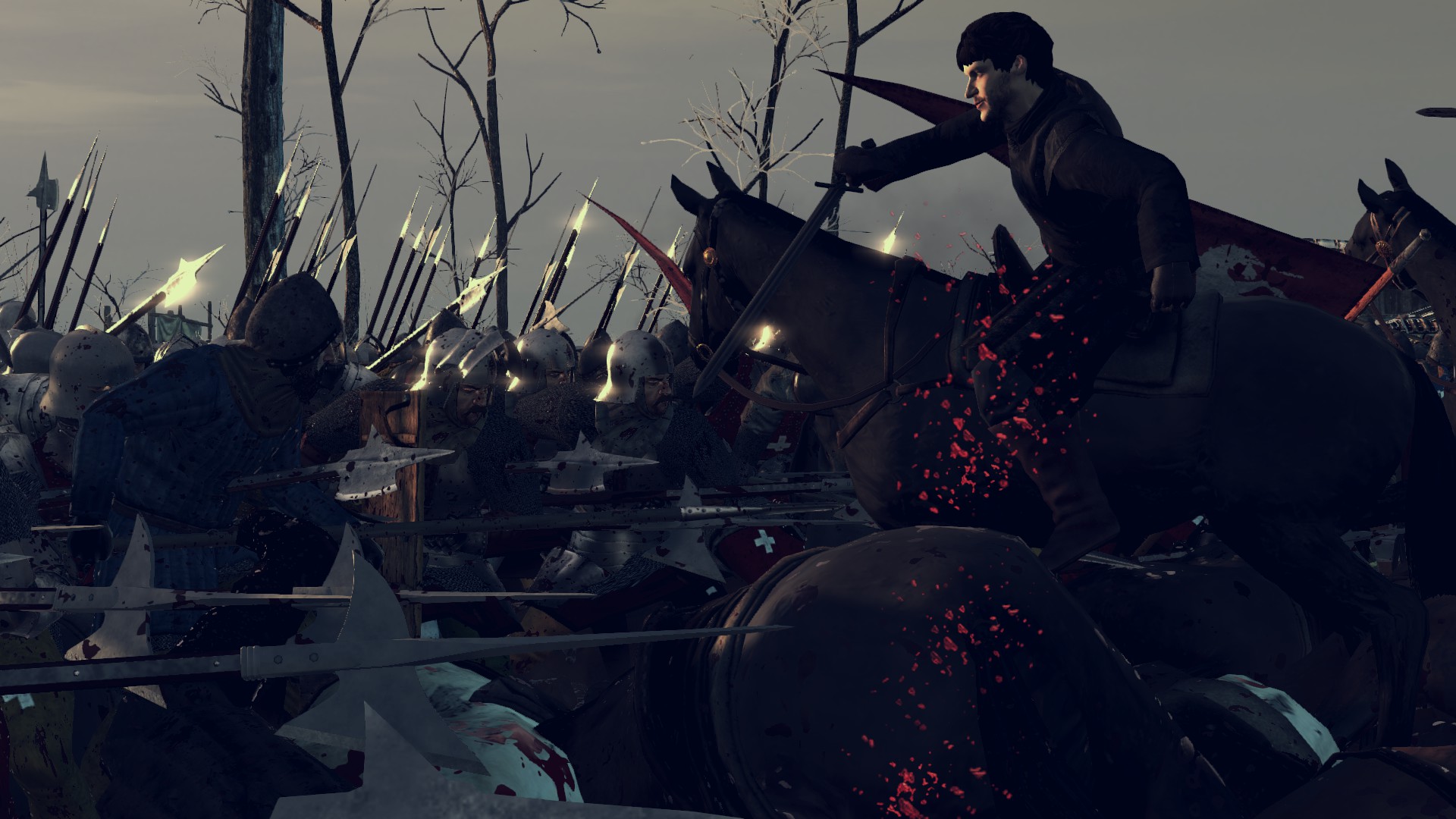morgan15
joined
A man is waiting for Season 8 of Game of Thrones but Winter is Here and I must bide my time. I proudly admit that I am a screenshot enthusiast. there are about 400 screenshots for Skyrim alone and 505 for my Total War: Attila. I shudder to see how many I have for Fallout 4. Before I take a shot, I would check the atmosphere and enviroment of the said shot, whether are there any background fighting going on or if the backdrop is nice enough to be included. For my Total War shots, the main background have to include forces clashing against each other to create the feel of a huge battle. I always use Escalation 3 for dramatic effects on the clouds, plus the cool props of damaged catapults and fire add more to the image. My main screenshot focus is Total War and will remain so for quite some time.
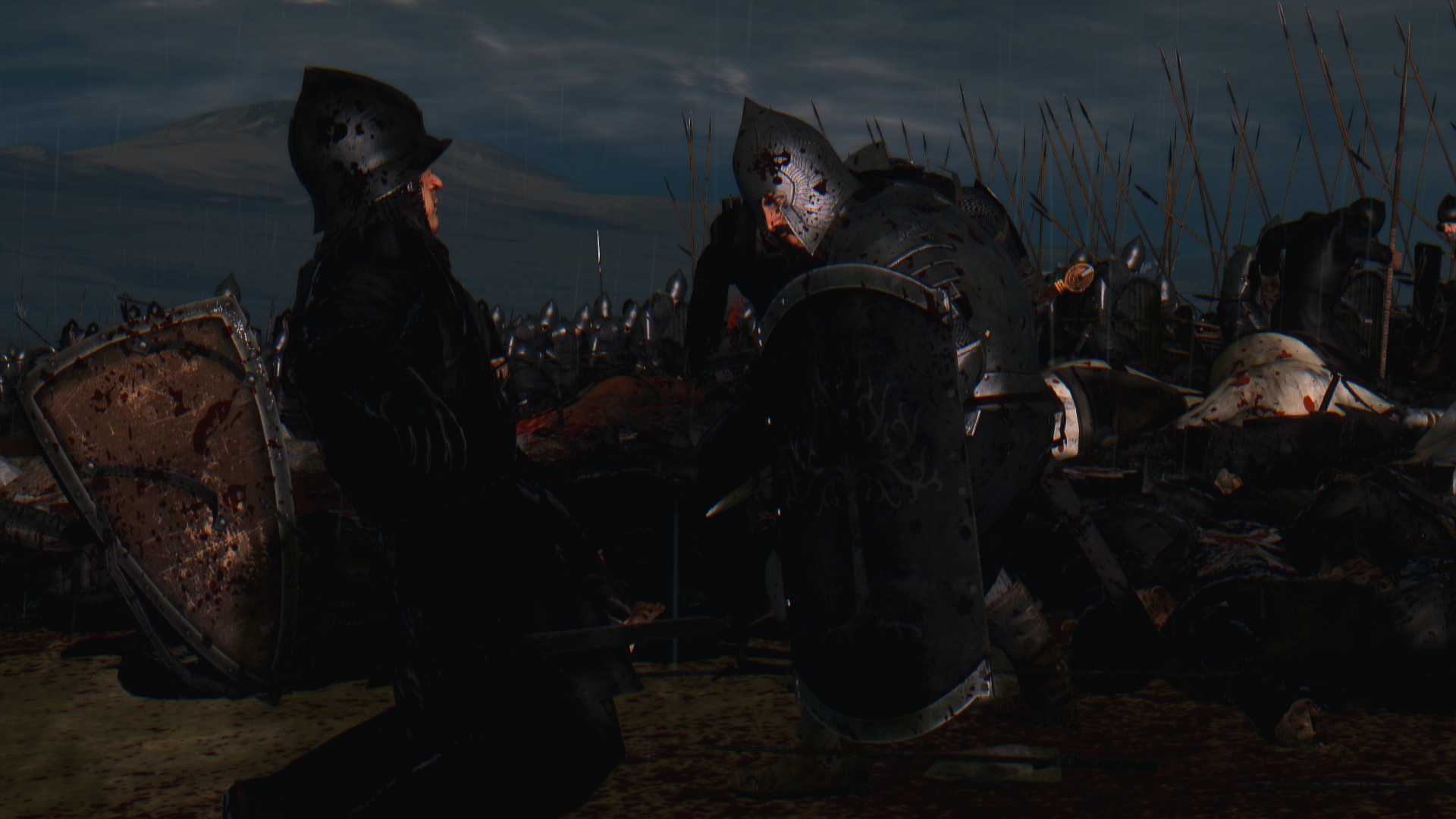
The Battle of the Bastards is a battle late in the War of the Five Kings in which Jon Snow and Sansa Stark retake Winterfell from Lord Ramsay Bolton, the Warden of the North, and restore House Stark as the ruling house of the North.
Prelude:
"A monster has taken our home and our brother. We have to go back to Winterfell and save them both!" ~ Sansa Stark to Jon Snow
Sansa urges her brother to help her retake Winterfell from the Boltons but Jon, weary from fighting, is reluctant at first. However, Jon agrees when he receives a letter from Ramsay, in which Ramsay threatens Jon's younger brother Rickon and sister Sansa, as well as the wildlings. In the letter, Ramsay reveals he is holding Jon and Sansa's brother Rickon hostage, and demands the return of Sansa on threat of murdering the wildlings and Rickon, before having Sansa gang-raped. Jon and Sansa resolve to march on the Boltons to save their younger brother and retake Winterfell.
Raising an army:
"There are more than three other houses in the North: Glover, Mormont, Cerwyn, Mazin, Hornwood. Two dozen more. Together they equal all the others. We can start small and build." ~ Jon Snow's initial plans
With the Karstarks under Harald Karstark having declared for Ramsay due to their anger toward Robb and Jon respectively, Jon and Sansa are forced to recruit the meager forces of the minor Houses to aid them. They are successful in persuading the Free Folk, House Mazin, House Hornwood, and House Mormont to join them, while Robett Glover, head of House Glover, refuses to declare for them, citing both his hatred for the wildlings and his anger at Robb for having failed to protect them from Balon Greyjoy's invasion of the North. He would eventually lead a force when word got out that the Kingdom of Gondor had accepted Jon Snow's plea for aid. When the news spread of the mighty King Eldarion of Gondor amassing his troops, the major Houses started to rise in revolt against the Boltons. The Umbers came with greenboys and old horns, eager to fight. Manderlys arrived on their fastest steeds in the dead of the night before the fight. A separate faction within House Karstark under the leadership of Alys Karstark pledged their support.
The Battle:
"Who owns the North?!" ~ Mors Umber rallying the Stark-lead coalition
The battle begins with the Stark forces deployed on a hill, standing behind their allies in a rearguard formation to defend the trebuchets and catapults of Gondor. Across the field is the much larger Bolton army, using burning flayed corpses in an effort to demoralize the Stark-coliation to no avail. Ramsay himself trots out on his horse to the front of the formation, bringing along a prisoner: Rickon Stark himself. Ramsay acts at first as if he will slit Rickon's throat, but instead cuts his bonds and delightfully insists that he play a game. He points at Jon and tells Rickon, "Run to your brother." Rickon immediately starts running in a straight line toward Jon, while Ramsay shoots and misses with a war bow. Just when Rickon is about to reach Jon, however, Ramsay's final shot hits Rickon in the heart, killing him almost instantly.
Enraged and maddened at such a display, King Eldarion commanded his artillery pieces to fire. Jon prepares for his last stand by drawing Longclaw and facing the Bolton cavalry seemingly alone. He is saved by the timely arrival of flaming rocks from the Gondorian trebuchets that marked the start of the battle, the Bolton-Karstark cavalry were disorganized by the sudden rain of fireballs and were easy pickings for Gondorian archers. Jon managed to run back within striking distance of allied arrows with the enemy forces hot on his trail. Ramsay sends forward his remaining forces, which Harald Karstark leads into battle. The Stark forces retaliated by surging down the hill after a rallying cry from Mors Umber, and the battle becomes a bloody storm of swords. Men fall in battle so quickly that they begin to form small hills of the dead. When King Eldarion moved his spears into formation, encircling the Bolton infantry and slowly moving into the kill. Seeing his mighty force destroyed, Ramsay decides to retreat to Winterfell to hopefully hold out in a siege. Jon, in a murderous fury, gives chase.
Despite his general's concerns, Ramsay expresses confidence they can withstand the Starks since they hold Winterfell. His plan goes awry, however, when a large boulder smashed the gate - fired from a trebuchet on the orders of one Sansa Stark in her bid to contribute to retaking her home. Ramsay, refusing to surrender, taunts Jon, saying that he finally accepted his proposal of single combat, before proceeding to shoot arrows at an unarmed Jon. Jon quickly grabs a shield from a fallen Mormont soldier and while boldly advancing, blocks three of Ramsay's shots. When he reaches Ramsay, he smacks the bow out of his hands and knocks him to the ground. With Ramsay down, Jon pins him and proceeds to beat him savagely, severely disfiguring Ramsay's face. Though it seems as if he will kill Ramsay, Jon stops when he sees Sansa, realizing that she has as much right to revenge as he does. Jon orders Ramsay locked as a prisoner in the kennels, and the Flayed Man banners drop to the ground in a cluttered heap while the Direwolf banner is raised above Winterfell for the first time in three years. The Boltons' rule of the North is over, and House Stark and its allies retake the North with a decisive victory.
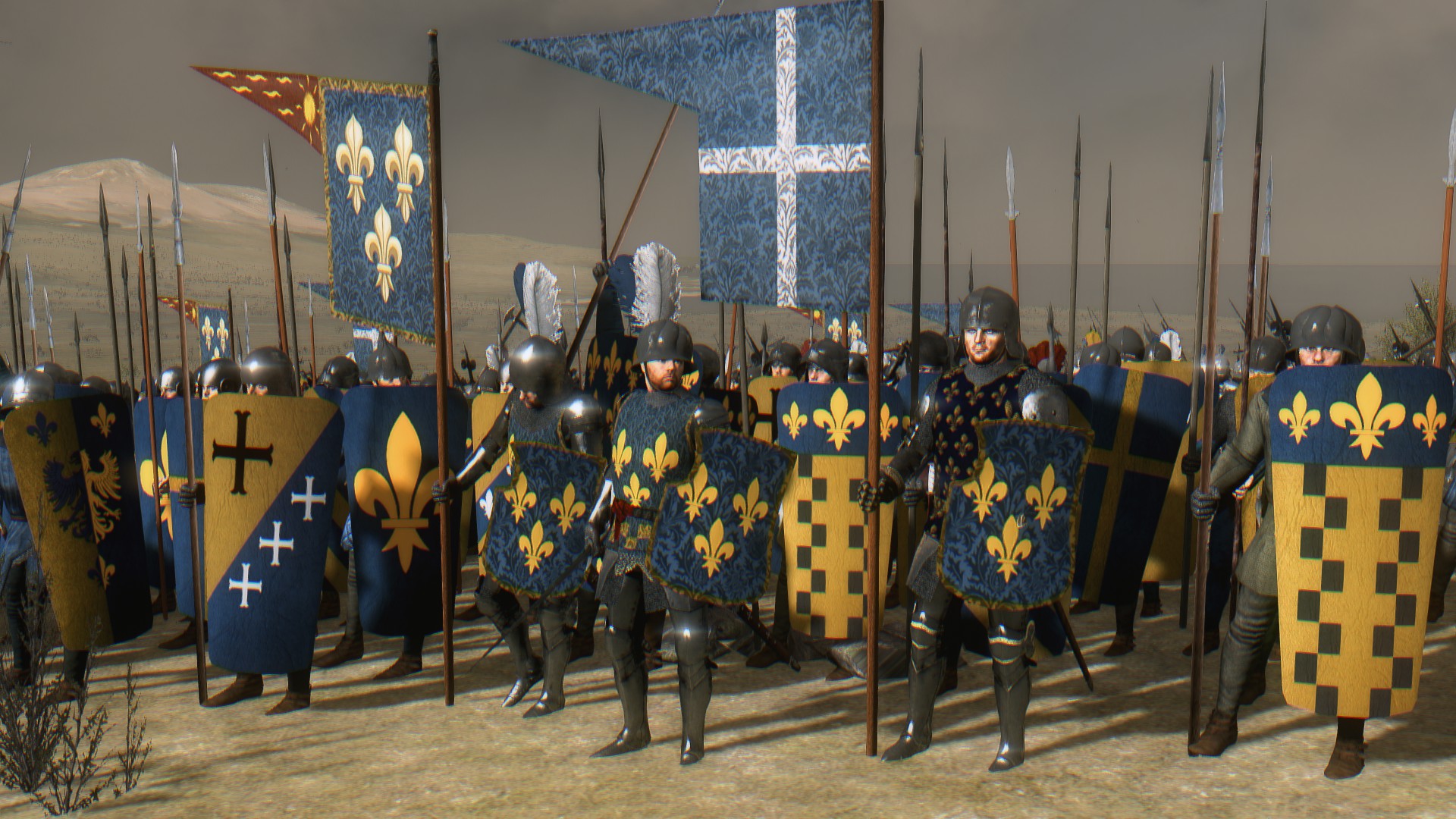
Reign: 987–1848 (1792–1814: Government-in-exile, 1815: Government-in-exile)
Today part of: France, and other parts of Europe
Last Monarch: Louis Philippe I
The Kingdom of France was a medieval and early modern monarchy in Western Europe. It was among the most powerful states in Europe and a great power since the Late Middle Ages and the Hundred Years' War. It was also an early colonial power, with possessions around the world.
France originated as West Francia, the western half of the Carolingian Empire, with the Treaty of Verdun (843). A branch of the Carolingian dynasty continued to rule until 987, when Hugh Capet was elected king and founded the Capetian dynasty. The territory remained known as Francia and its ruler as rex Francorum ("king of the Franks") well into the High Middle Ages. The first king calling himself Roi de France ("King of France") was Philip II, in 1190. France continued to be ruled by the Capetians and their cadet lines—the Valois and Bourbon—until the monarchy was abolished in 1792 during the French Revolution.
The Kingdom of France adopted a written constitution in 1791, but the Kingdom was abolished a year later and replaced with the First French Republic. The monarchy was restored by the other great powers in 1814 and lasted (except for the Hundred Days in 1815) until the French Revolution of 1848.
Hundred Years War:
The death of Charles IV of France in 1328 without male heirs ended the main Capetian line. Under Salic law the crown could not pass through a woman (Philip IV's daughter was Isabella, whose son was Edward III of England), so the throne passed to Philip VI, son of Charles of Valois. This, in addition to a long-standing dispute over the rights to Gascony in the south of France, and the relationship between England and the Flemish cloth towns, led to the Hundred Years' War of 1337–1453. The following century was to see devastating warfare, peasant revolts (the English peasants' revolt of 1381 and the Jacquerie of 1358 in France) and the growth of nationalism in both countries.
The losses of the century of war were enormous, particularly owing to the plague (the Black Death, usually considered an outbreak of bubonic plague), which arrived from Italy in 1348, spreading rapidly up the Rhone valley and thence across most of the country: it is estimated that a population of some 18–20 million in modern-day France at the time of the 1328 hearth tax returns had been reduced 150 years later by 50 percent or more.
Thirty Years War:
Henry IV's son Louis XIII and his minister (1624–1642) Cardinal Richelieu, elaborated a policy against Spain and the Holy Roman Empire during the Thirty Years' War (1618–48) which had broken out in Germany. After the death of both king and cardinal, the Peace of Westphalia (1648) secured universal acceptance of Germany's political and religious fragmentation, but the Regency of Anne of Austria and her minister Cardinal Mazarin experienced a civil uprising known as the Fronde (1648–1653) which expanded into a Franco-Spanish War (1653–59). The Treaty of the Pyrenees (1659) formalised France's seizure (1642) of the Spanish territory of Roussillon after the crushing of the ephemeral Catalan Republic and ushered a short period of peace.
Louis XIV, the Sun King:
For most of the reign of Louis XIV (1643–1715), ("The Sun King"), France was the dominant power in Europe, aided by the diplomacy of Cardinal Richelieu's successor as the King's chief minister, (1642–61) Cardinal Jules Mazarin, (1602–61). Cardinal Mazarin oversaw the creation of a French Royal Navy that rivalled England's, expanding it from 25 ships to almost 200. The size of the Army was also considerably increased. Renewed wars (the War of Devolution, 1667–68 and the Franco-Dutch War, 1672–78) brought further territorial gains (Artois and western Flanders and the free county of Burgundy, previously left to the Empire in 1482), but at the cost of the increasingly concerted opposition of rival royal powers, and a legacy of an increasingly enormous national debt. An adherent of the theory of the "Divine Right of Kings", which advocates the divine origin of temporal power and any lack of earthly restraint of monarchical rule, Louis XIV continued his predecessors' work of creating a centralized state governed from the capital of Paris. He sought to eliminate the remnants of feudalism still persisting in parts of France and, by compelling the noble elite to regularly inhabit his lavish Palace of Versailles, built on the outskirts of Paris, succeeded in pacifying the aristocracy, many members of which had participated in the earlier "Fronde" rebellion during Louis' minority youth. By these means he consolidated a system of absolute monarchy in France that endured 150 years until the French Revolution.
In November 1700, the Spanish king Charles II died, ending the Habsburg line in that country. Louis had long waited for this moment, and now planned to put a Bourbon relative, Philip, Duke of Anjou, (1683–1746), on the throne. Essentially, Spain was to become a perpetual ally and even obedient satellite of France, ruled by a king who would carry out orders from Versailles. Realizing how this would upset the balance of power, the other European rulers were outraged. However, most of the alternatives were equally undesirable. For example, putting another Habsburg on the throne would end up recreating the grand multi-national empire of Charles V (1500–58), of the Holy Roman Empire (German First Reich), Spain, and the Two Sicilies which would also grossly upset the power balance. After nine years of exhausting war, the last thing Louis wanted was another conflict. However, the rest of Europe would not stand for his ambitions in Spain, and so the long War of the Spanish Succession began (1701–14), a mere three years after the War of the Grand Alliance, (1688–97, aka "War of the League of Augsburg") had just concluded.
Final Dissolution:
On 9 August 1830, the Chamber of Deputies elected Louis Philippe, Duke of Orléans as "King of the French": for the first time since French Revolution, the King reigned on a people and not on a country. The Bourbon white flag was substituted with the French tricolour, and a new Charter was introduced in August 1830. The conquest of Algeria continued, and new settlements were established in the Gulf of Guinea, Gabon, Madagascar, and Mayotte and also put Tahite under protectorate.
However, despite the initial reforms, Louis Philippe was little different from his predecessors. The old nobility was replaced by urban bourgeoisie, and the working class was excluded from voting. Louis Philippe appointed notable bourgeois as Prime Minister, like banker Casimir Périer, academic François Guizot, general Jean-de-Dieu Soult, and thus obtained the nickname of "Citizen King" (Roi Bourgeois). The July Monarchy was beset by corruption scandals and financial crisis. The opposition of the King was composed of Legitimists, supporting the Count of Chambord, Bourbon claimant to the Throne, and of Bonapartists and Republicans who fought against royalty and supported the principles of democracy. The King tried to suppress the opposition with censorship, but when the Campagne des banquets ("Banquets' Campaign") was repressed in February 1848, riots and seditions erupted in Paris and later all France, resulting in the February Revolution. The National Guard refused to repress the rebellion, resulting in Louis Philippe abdicating and fleeing to England. On 24 February 1848, the monarchy was abolished and the Second Republic was proclaimed.
Despite later attempts to re-establish the Kingdom in the 1870s, during the Third Republic, the French monarchy has not returned.
List of Territories and Provinces of the Kingdom:
Domain of the Frankish king
Ile de France
Reims
Bourges
Orleans
Direct vassals of the French king in the 10th to 12th centuries:
County of Champagne (to the royal domain in 1316)
County of Blois (to the royal domain in 1391)
Duchy of Burgundy (until 1477, then divided between France and the Habsburgs)
County of Flanders (to Burgundy in 1369)
Duchy of Bourbon (1327–1523)
Acquisitions during the 13th to 14th centuries:
Duchy of Normandy (1204)
County of Tourain (1204)
County of Anjou (1225)
County of Maine (1225)
County of Auvergne (1271)
County of Toulouse (1271)
County of Champagne (to the royal domain in 1316)
Dauphiné (1349), hereditary possession of the kings of France, to be held by the heir apparent, but technically not part of the kingdom of France because it remained nominally part of the Holy Roman Empire.
County of Blois (to the royal domain in 1391)
Acquisitions from the Plantagenet kings of England with the French victory in the Hundred Years' War 1453:
Duchy of Aquitaine (Guyenne)
Lordship of Déols
Duchy of Gascogne
Duchy of Bretagne (disputed since the War of the Breton Succession, to France in 1453, to the royal demesne in 1547)
Acquisitions after the end of the Hundred Years' War:
Duchy of Burgundy (1477)
Pale of Calais (1558)
Kingdom of Navarre (1620)
Alsace: Peace of Westphalia (1648), Treaty of Nijmegen, Truce of Ratisbon (1684)
County of Artois (1659)
Roussillon and Perpignan, Montmédy and other parts of Luxembourg, parts of Flanders, including Arras, Béthune, Gravelines and Thionville (Treaty of the Pyrenees 1659)
Free County of Burgundy (1668, 1679)
French Hainaut (1679)
Principality of Orange (1713)
Duchy of Lorraine (1766)
French conquest of Corsica (1769)
Comtat Venaissin (1791)
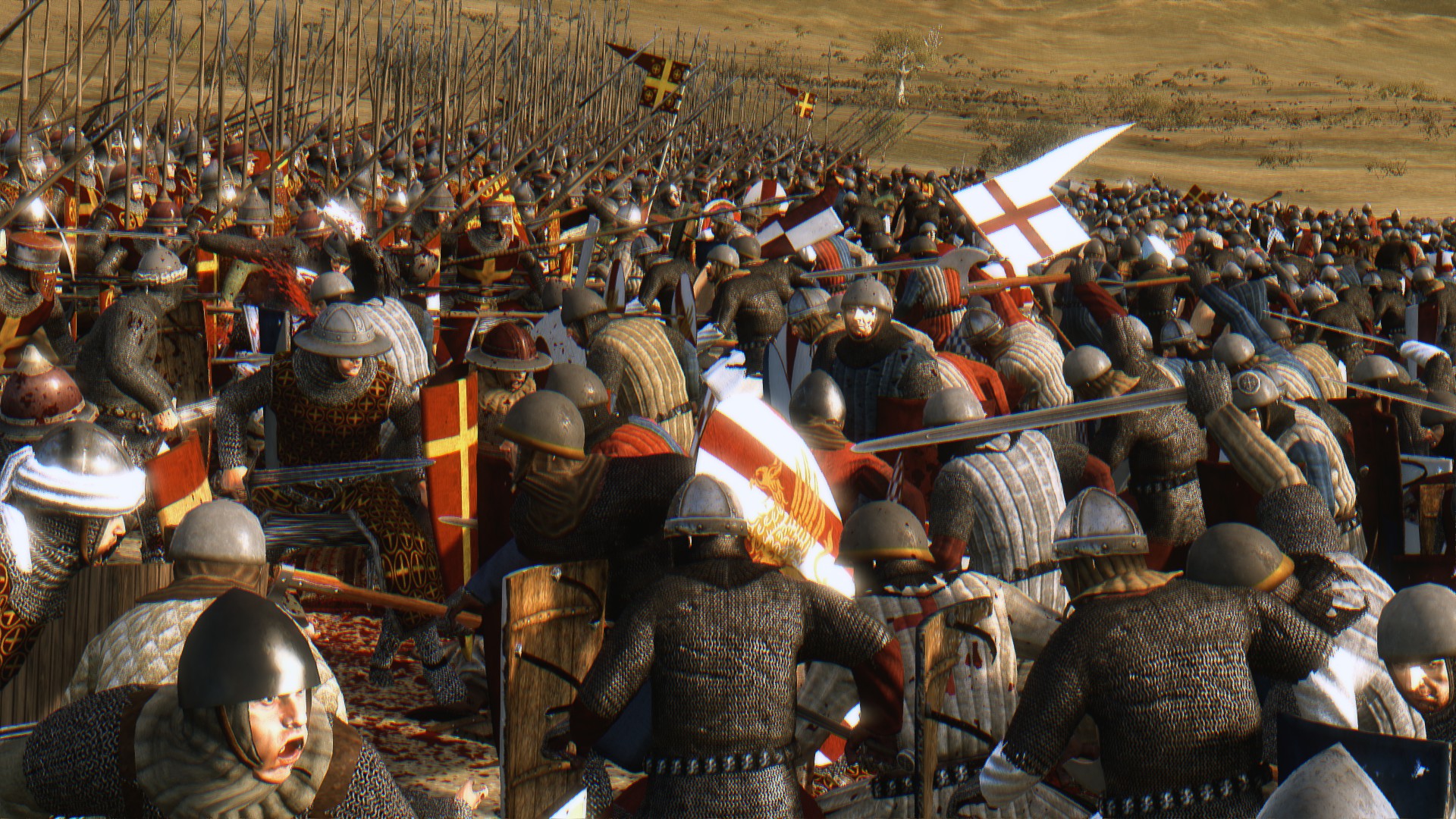
Result:
Decisive Nicaean victory
- Restoration of the Byzantine Empire under the Palaeologus Dynasty
The Nicaean–Latin wars were a series of wars between the Latin Empire and the Empire of Nicaea, starting with the dissolution of the Byzantine Empire by the Fourth Crusade in 1204. The Latin Empire was aided by other Crusader states established on Byzantine territory after the Fourth Crusade, as well as the Republic of Venice, while the Empire of Nicaea was assisted occasionally by the Second Bulgarian Empire, and sought the aid of Venice's rival, the Republic of Genoa. The conflict also involved the Greek state of Epirus, which also claimed the Byzantine inheritance and opposed Nicaean hegemony. The Nicaean reconquest of Constantinople in 1261 AD and the restoration of the Byzantine Empire under the Palaeologus dynasty did not end the conflict, as the Byzantines launched on and off efforts to reconquer southern Greece (the Principality of Achaea and the Duchy of Athens) and the Aegean islands until the 15th century, while the Latin powers, led by the Angevin Kingdom of Naples, tried to restore the Latin Empire and launched attacks on the Byzantine Empire.
Battles:
Battle of Adramyttion (1205) - Latin Victory
Battle of the Rhyndacus (1211) - Latin Victory
Battle of Poimanenon (1224) - Nicaean victory
Siege of Constantinople (1235) - Latin Victory
Battle of Pelagonia (1259) - Nicaean victory
Siege of Constantinople (1260) - Latin Victory
Reconquest of Constantinople (1261) - Nicaean victory
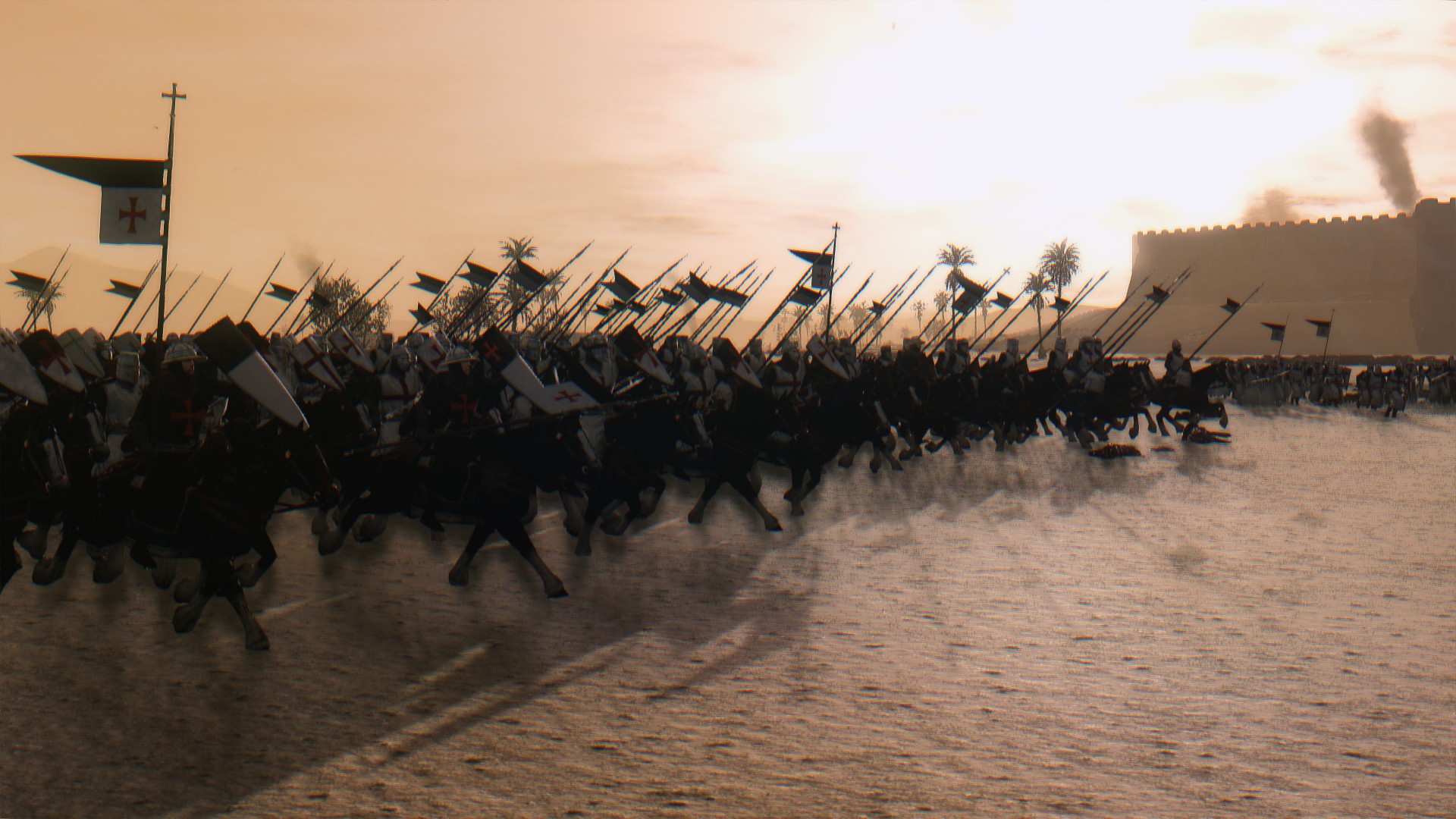
"We make war that we may live in peace." ~ Aristotle
Ascalon was turned into a diocese directly under the Patriarch of Jerusalem, although in earlier times it had been a suffragan of the Bishop of Bethlehem. The city's mosque was reconsecrated as a church. The city was also added to the County of Jaffa, which was already held by Baldwin III's brother Amalric. The double County of Jaffa and Ascalon later became the most important crusader seigneury, held either as an apanage to the crown or granted to influential barons.
The fall of Ascalon contributed to the downfall of Fatimid Egypt. Amalric succeeded his brother as king of Jerusalem in 1162, and throughout the 1160s led numerous expeditions from Ascalon into Egypt. These Crusader invasions of Egypt failed to bring that country under Amalric's control.
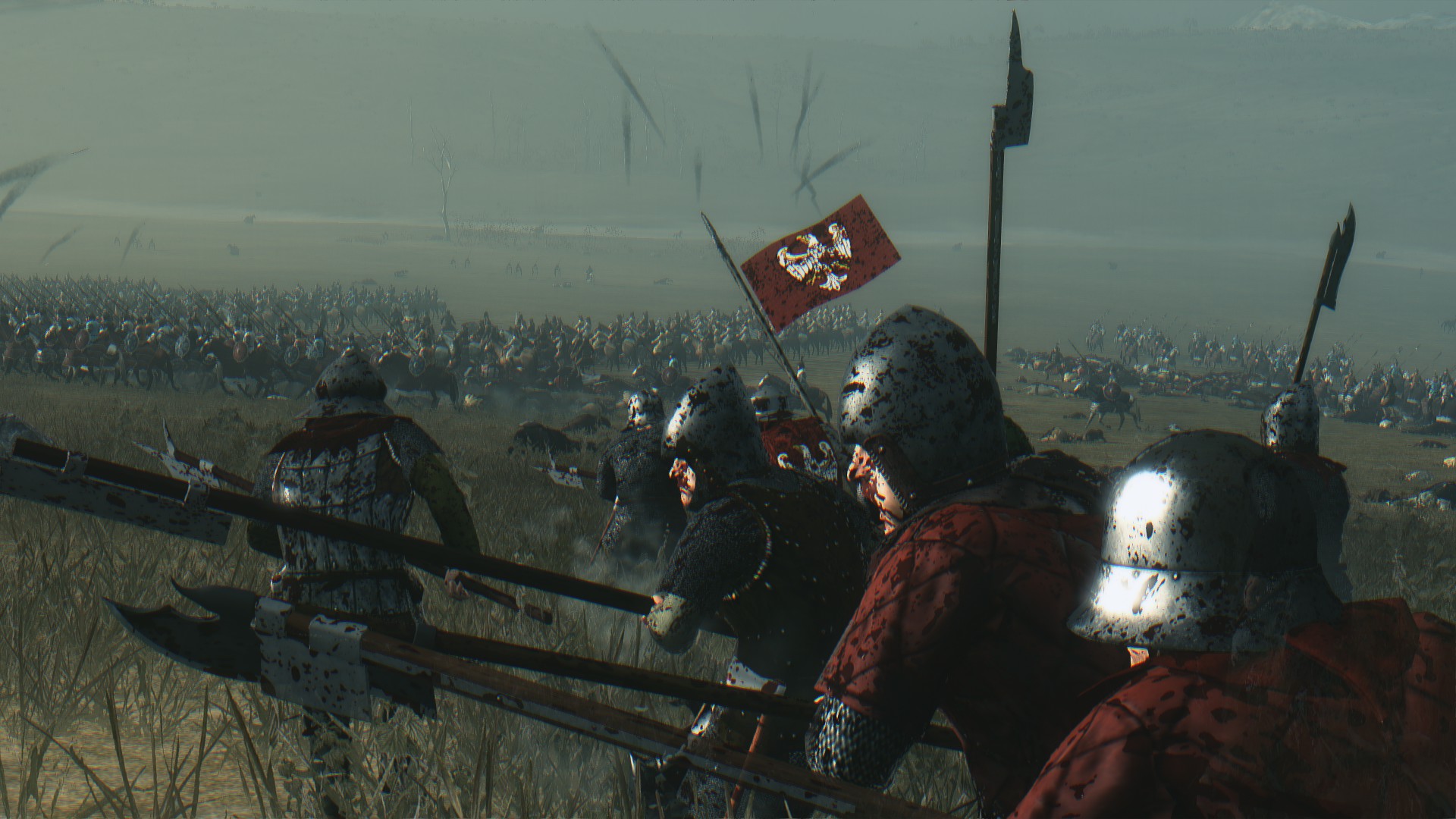
The purpose of the invasion was to loot the divided Kingdom of Poland (see Testament of Bolesław III Krzywousty), and to weaken Duke of Kraków Bolesław V the Chaste, whose province, Lesser Poland, began a process of fast development. According to the Mongol plan, the invaders were to enter Lesser Poland east of Lublin, and head towards Zawichost. After crossing the Vistula, the Mongol army was to break into two columns, operating north and south of the Holy Cross Mountains. The columns were to unite near Chęciny, and then head southwards, to Kraków. Altogether, Mongol forces under Boroldai were 30,000 strong, with Ruthenian units of King Daniel of Galicia, his brother Vasilko Romanovich, Kipchaks and probably Lithuanians or Yotvingians. The province that they had invaded was completely destroyed with rich loot taken. Some 10,000 Poles were taken with the invaders as slaves. The success of the Golden Horde was complete, as they managed to destroy an anti-Mongol alliance, and completely subjugate the Kingdom of Galicia–Volhynia.
"If you look outside the walls of your city, you'll find thousands of Northmen who would explain to you why harming Jon Snow is not in your interest." - Sansa Stark
Let's just say that Sansa's threat to Grey Worm fell into fruition where the combined forces of the North and Vale charged through the broken city walls in their bid to free their true King from his imprisonment. Having fought beside Dothraki before, the Northmen used pikes and arrows to thin the herd before moving into the slaughter.
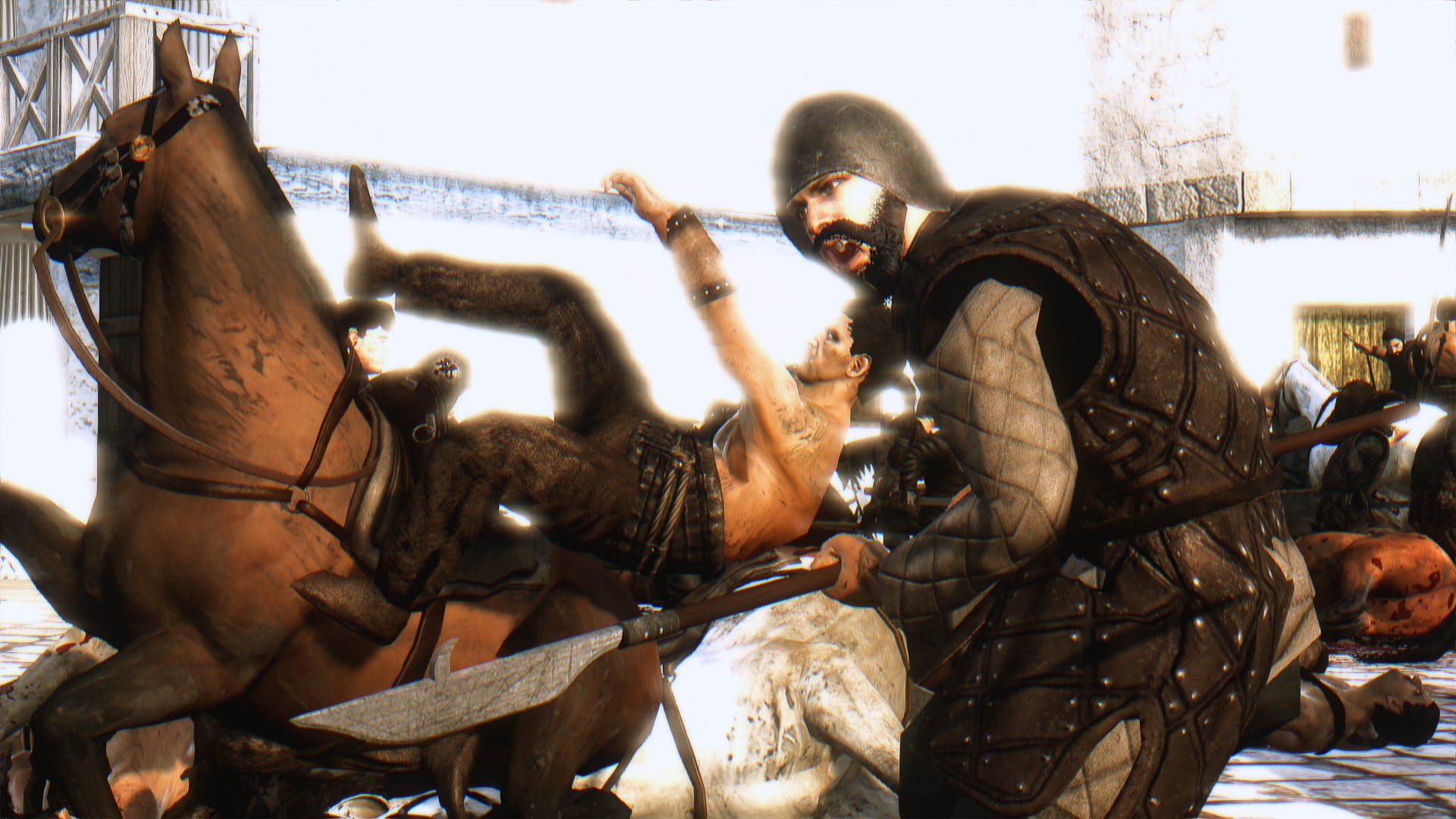
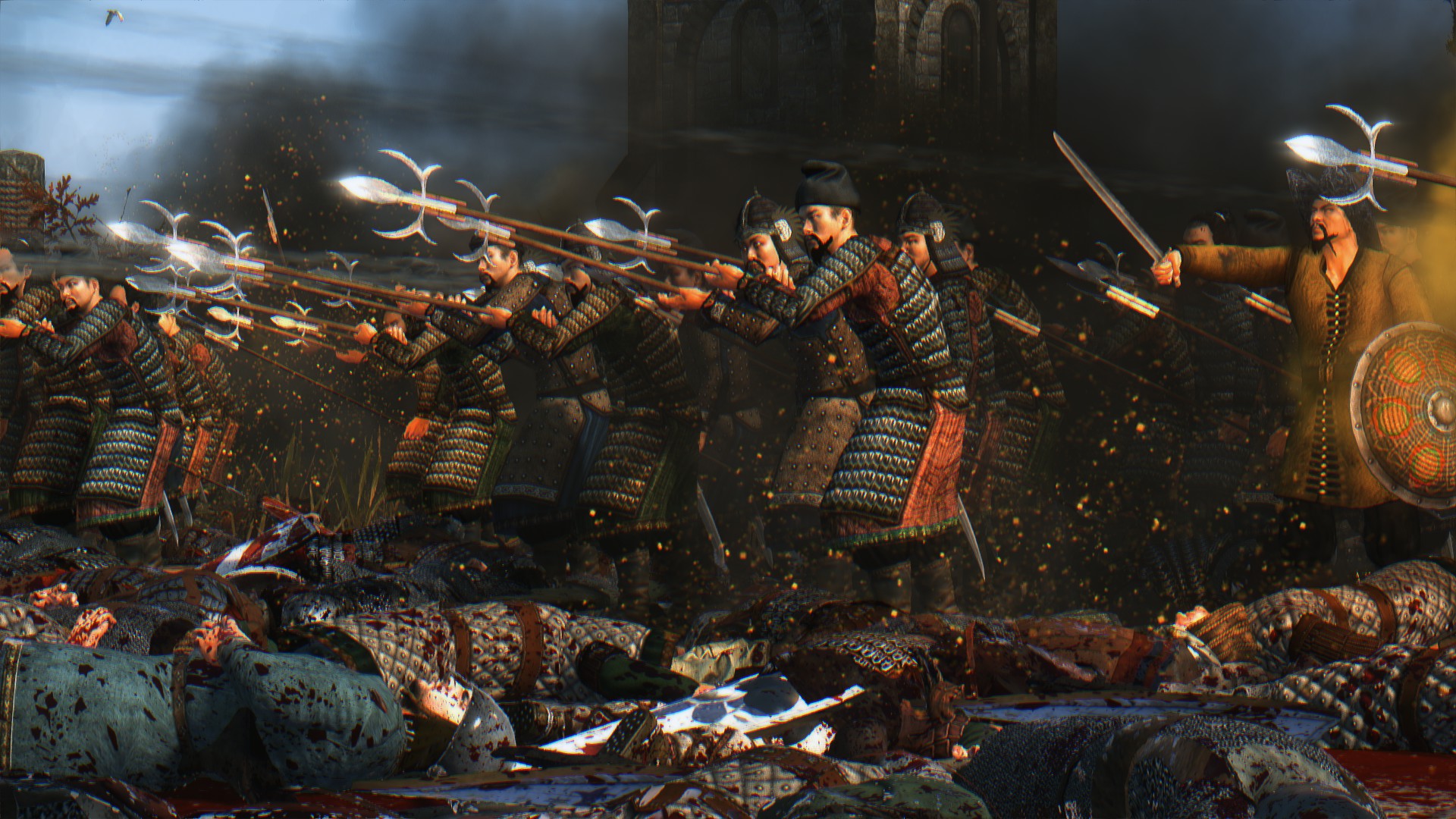
The fire lance (simplified Chinese: 火枪; pinyin: huǒ qiāng) was a very early gunpowder weapon that appeared in 10th century China during the Jin-Song Wars. It began as a small pyrotechnic device attached to a spear-like weapon, used to gain a critical shock advantage right at the start of a melee. As gunpowder improved, the explosive discharge was increased, and debris or pellets added, giving it some of the effects of a combination modern flamethrower and shotgun, but with a very short range (3 meters or less), and only one shot (some were designed for two shots). In later larger and more powerful fire lances, the lance-point was discarded, as these versions were too unwieldy to be used in melee. These are considered to be a proto-gun, the predecessor of the hand cannon, and the ancestor of all firearms.
P.S. I am glad that the mod devs of Medieval 1212 AD has implemented the earliest model of guns into the ranks of the Mongol Horde since they are the closest relatives to China during the era where the mod takes place. I reckon it would be around the height of Jin-Song War, nearly 20 years before the Song Dynasty would begin.
The acclaimed title "Three Kingdoms: Total War" is just round the corner to its release date since being delayed from its original debut in September 2018, and I must say that Creative Assembly really overdid it with their new campaign features: loyalty, friendship, deceit, spies, honour - all will be tested in the new campaign in the downfall of the Han Dynasty.
We already know that CA has bundled the Yellow Turban Rebellion together with those that pre-order the game, and we can assume that blood & gore would be their next content - either free or paid is yet to be known, but I'm keeping my fingers crossed for a free LC. Now, if they truly want people to pay for their next DLC than they should include a campaign about Sima Yi's Liaodong Campaign as it features one of Korea's most powerful kingdoms during that time period - Goguryeo.
The Kingdom of Goguryeo had friendly ties with Cao Wei - the successor state of the Han Dynasty and in the year 238 - an alliance was formed. And the two great powerful armies marched together to defeat their common enemy, a warlord named Gongsun Yuan - the last of the Gongsun warlords that had been a thorn in Goguryeo's side. The alliance broke down in 242 when King Dongcheon of Gorguryeo raided the Liaodong district of Xi'anping (西安平; near present-day Dandong, Liaoning) at the mouth of the Yalu River - the motive of the raid remains unclear but has been speculated between territorial control over the "Small River Maek" (小水貊) people nearby, a branch of the Goguryeo people known for their excellent bows or a search for agriculture land. Goguryeo eventually was defeated, they rose again when Cao Wei was replaced by the Jin Dynasty by King Micheon, who took advantage of the weakness in Wei's successor the Jin dynasty and wrestled the commanderies of Lelang and Daifang from central Chinese control.
Korea has not appeared in the Total War series in a long-time since the first Shogun title. And this DLC idea would be the best way to introduce a new faction, a powerful one at that for players to either deal with or control it's dynasty by changing history.
Inspired by a fanfiction I read, I had to do this. There are dozens of stories that pitted the armies of Middle Earth against Westeros and this is my take on a 'What If' scenario where Gondor decides to ally themselves with Daenerys Targaryen in return for exotic materials and lands of their choosing when she takes the Iron Throne. To test their strength and loyalty, she commanded them to attack Euron Greyjoy's fleet at Pyke.
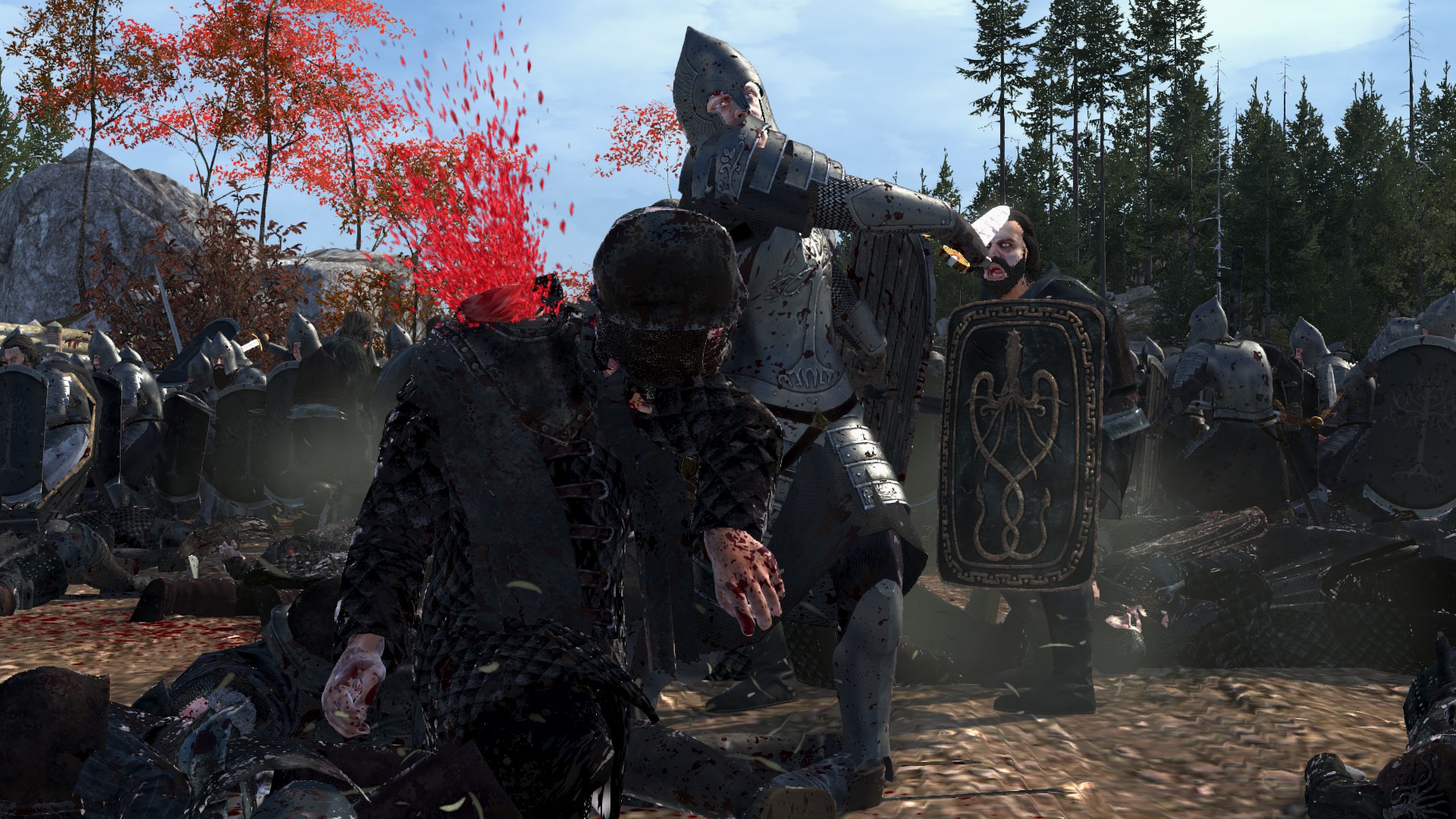
In an alternate take of the Battle of the Bastards, Jon Snow managed to gather support from the Holy Roman Empire in his bid to retake his family home of Winterfell from the grasps of the dreaded Ramsay Bolton - who became Lord after stabbing his own father. The knights had dug pits during the night and laid traps for the unsuspecting Bolton/Karstark cavalry when they thundered down the hillside. With the trap sprung, men in gambeson rushed from all sides with halberds, pikes and spears, together they advance and slaughtered the men from Karhold and the Dreadfort. Ramsay led a desperate charge with his best hunters, hoping to overwhelm the foreign invades but to no avail. Now his corpse lies on a barren wasteland and the rains weep o'er the Dreadfort with not a soul to hear.
